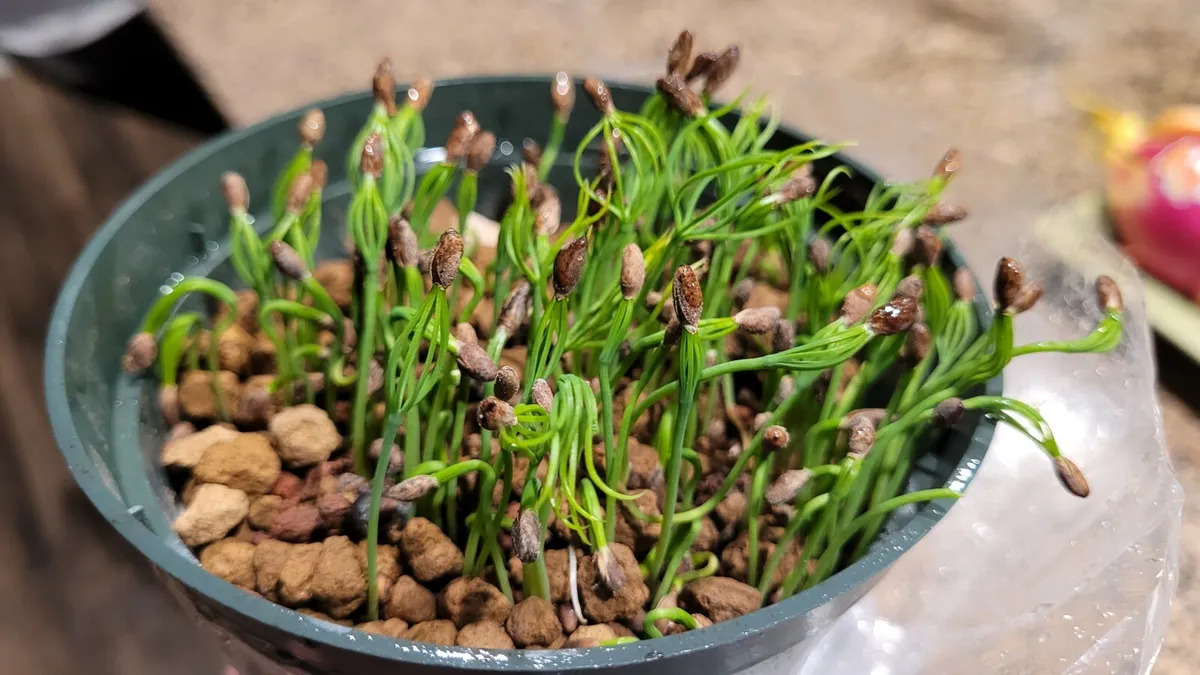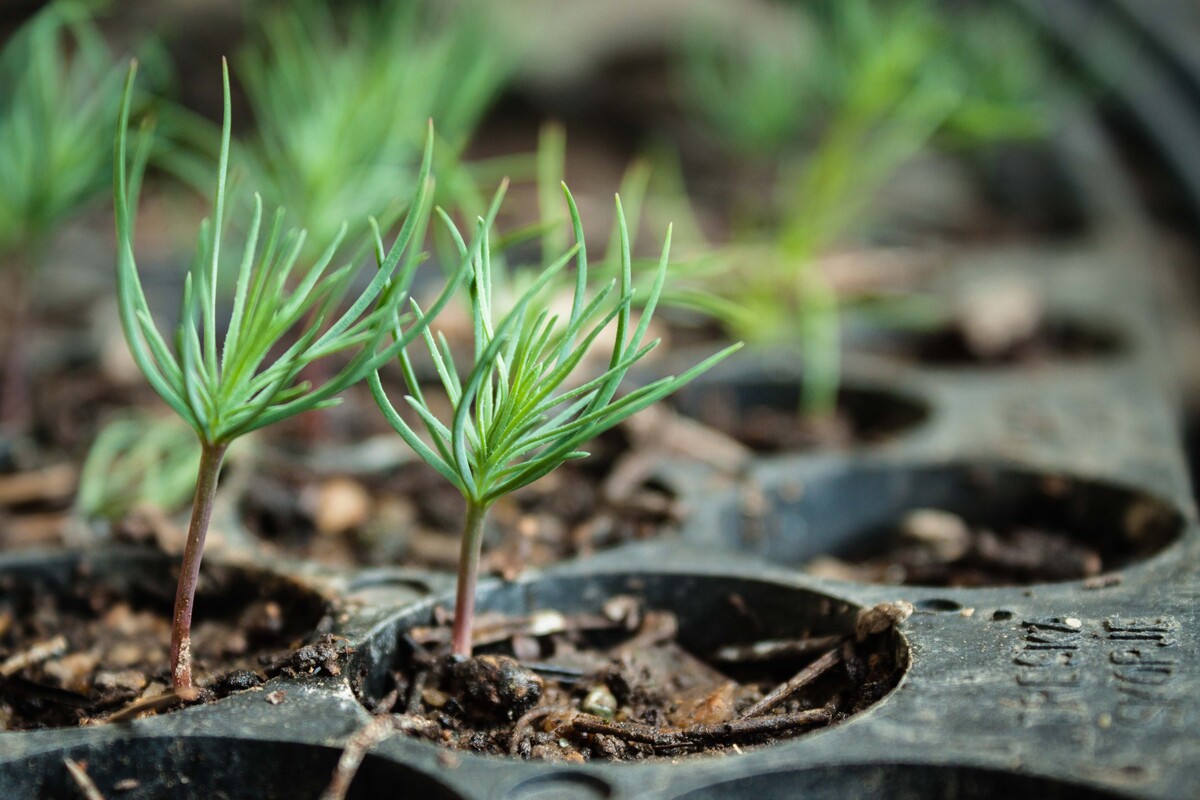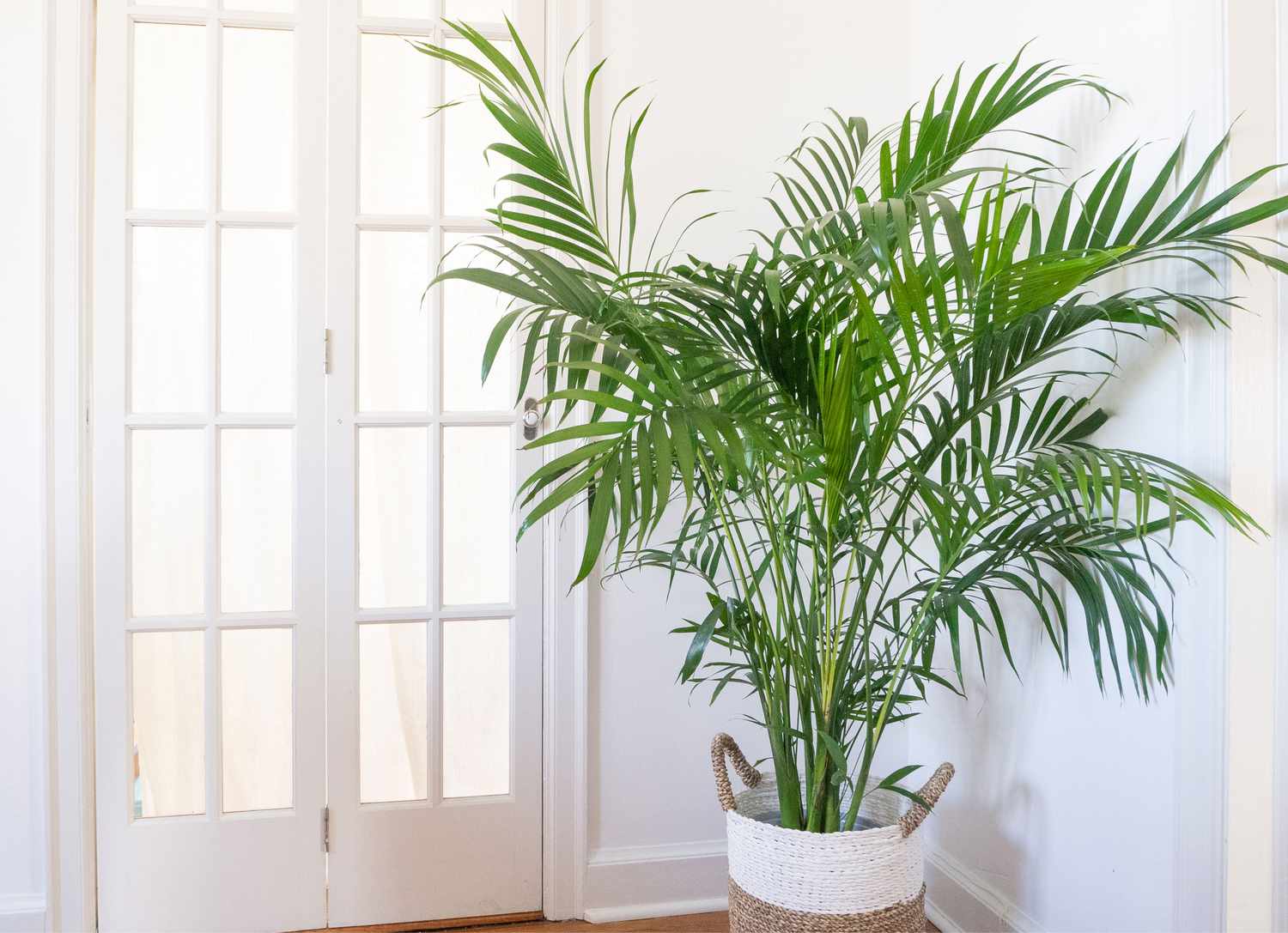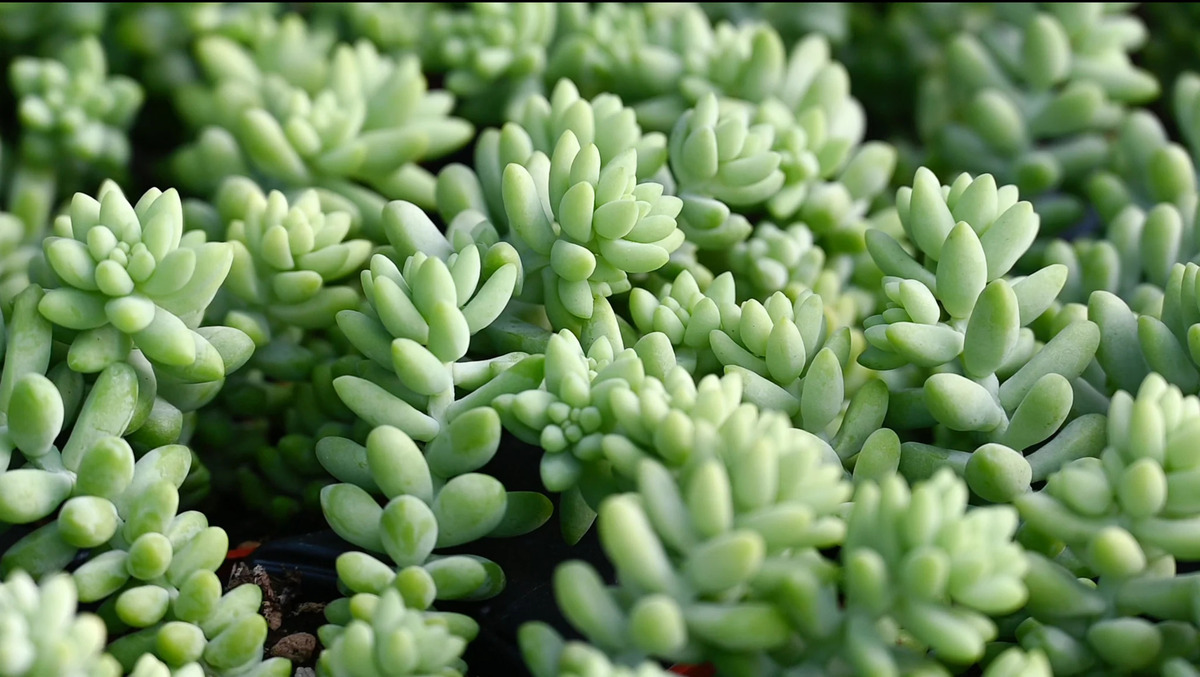Home>Types of Gardening>Ornamental Gardening>How To Care For Bonsai Seedlings


Ornamental Gardening
How To Care For Bonsai Seedlings
Modified: January 22, 2024
Learn how to properly care for bonsai seedlings in your ornamental gardening journey. Discover essential tips and techniques to ensure their healthy growth and stunning appearance.
(Many of the links in this article redirect to a specific reviewed product. Your purchase of these products through affiliate links helps to generate commission for Chicagolandgardening.com, at no extra cost. Learn more)
Table of Contents
Introduction
Welcome to the fascinating world of ornamental gardening and the art of bonsai! Bonsai, a traditional Japanese horticultural practice, involves cultivating small trees in containers, which are carefully shaped and pruned to resemble miniature versions of their full-sized counterparts. The result is a beautiful and captivating display of nature’s artistry.
As an ornamental gardening enthusiast, you have decided to embark on the journey of caring for bonsai seedlings. While it may seem daunting at first, with the right knowledge and techniques, you can successfully nurture and shape these tiny trees into works of living art.
In this guide, we will explore the essential steps and practices to care for bonsai seedlings. From choosing the right seedlings to providing the ideal growing environment, watering and fertilizing, and even dealing with pests and diseases, we will cover everything you need to know to ensure the health and beauty of your bonsai.
Whether you are a seasoned gardener or new to ornamental gardening, cultivating bonsai is a rewarding experience that requires patience, attention to detail, and a deep appreciation for the artistry of nature. So, roll up your sleeves, grab your tools, and let’s delve into the enchanting world of bonsai care!
Choosing the Right Bonsai Seedlings
When it comes to bonsai, selecting the right seedlings is crucial for the success of your miniature tree. Here are a few key considerations to keep in mind:
- Species: Different tree species have unique characteristics and growth habits, so choose one that suits your climate and personal preferences. Some popular choices for beginners include junipers, Chinese elms, and ficus.
- Size: Consider the ultimate size you want your bonsai to be. If you prefer a larger tree, select a seedling with a thicker trunk and more established branches. For a smaller bonsai, choose a younger seedling with a thinner trunk.
- Health: Inspect the seedling for any signs of disease, pests, or other issues. Look for healthy foliage, strong roots, and a vibrant overall appearance. Avoid seedlings with visible damage or wilting leaves.
- Age: While it is tempting to start with a mature bonsai, beginners often find it easier to work with younger seedlings. Young plants are more flexible and adaptable to shaping and styling techniques.
Additionally, consider seeking guidance from experienced bonsai enthusiasts or nurseries specializing in bonsai. They can provide valuable advice based on your location, climate, and skill level. Don’t be afraid to ask questions and request assistance in selecting the right bonsai seedlings.
Remember, the process of growing and shaping a bonsai is a long-term commitment, so take your time in choosing the perfect seedling. With the right foundation, you can transform a humble young tree into a spectacular work of art.
Providing the Ideal Growing Environment
Your bonsai seedlings require a carefully controlled environment to thrive and reach their full potential. Here are some key factors to consider when creating the optimal growing conditions:
- Light: Bonsai seedlings need an adequate amount of natural light to carry out photosynthesis and promote healthy growth. Ensure they receive at least 5-6 hours of direct sunlight each day. If natural light is limited, consider supplementing with artificial grow lights.
- Temperature: Most bonsai species prefer moderate temperatures between 60-75°F (15-24°C). Avoid exposing them to extreme heat or cold, as it can stress the seedlings and compromise their health. Provide proper insulation during colder months to protect them from frost.
- Humidity: Bonsai seedlings thrive in humid environments. To increase humidity levels, you can place a tray of water near the plants or use a humidity tray filled with water and pebbles. Regularly misting the foliage can also provide a boost of moisture.
- Air Circulation: Proper air circulation is essential to prevent the accumulation of stagnant air and the risk of disease. Place your bonsai seedlings in an area with good ventilation, allowing fresh air to flow around the plants. Avoid placing them in drafty or excessively windy locations.
- Soil: Bonsai seedlings require well-draining soil to prevent waterlogging that can lead to root rot. Use a bonsai-specific soil mix or create your own by combining components such as Akadama, pumice, and lava rock. This ensures both proper drainage and retention of essential nutrients.
- Container: Choose an appropriate bonsai pot that provides adequate drainage and allows for root growth. The size of the pot should be proportionate to the seedling’s current size, with room for future growth. Ensure the pot is made of a durable material that can withstand frequent watering and shaping.
By paying attention to these environmental factors, you can create an ideal growing environment for your bonsai seedlings. Remember to monitor and adjust these conditions as needed, based on the specific requirements of your chosen bonsai species. Providing a nurturing environment will set the foundation for the healthy development and longevity of your bonsai.
Watering and Moisture Control
Proper watering is crucial for the health and vitality of your bonsai seedlings. Here are some essential guidelines to follow:
- Watering Frequency: Bonsai seedlings need consistent moisture, but overwatering can lead to root rot and other issues. Water your bonsai when the soil feels slightly dry to the touch, but not bone dry. The frequency of watering will depend on factors such as temperature, humidity, and the specific needs of your bonsai species.
- Watering Technique: When watering your bonsai seedlings, aim to thoroughly wet the entire root system. Avoid just watering the surface of the soil, as this can lead to uneven moisture distribution. Use a gentle and even flow of water, allowing it to soak through the soil and drain out of the bottom of the pot.
- Moisture Control: Use a moisture meter or your finger to assess the moisture level in the soil. Insert the meter or your finger about an inch deep into the soil. If it feels moist, refrain from watering until the soil dries out slightly. Adjust your watering schedule based on the results to avoid over or underwatering.
- Water Quality: Bonsai seedlings are sensitive to the quality of water used for watering. Ideally, use filtered, distilled, or rainwater to provide optimal hydration. Tap water can be used if it is not excessively hard or treated with chemicals that may harm the seedlings. Avoid using water that is too cold or hot.
- Humidity and Misting: Maintaining adequate humidity is crucial for bonsai seedlings. In drier climates or during periods of low humidity, mist the foliage of your bonsai regularly to increase moisture levels around the plant. This helps prevent dehydration and maintains optimal leaf health.
- Drainage: Ensuring proper drainage is essential to prevent waterlogged soil and root rot. Make sure your bonsai pot has drainage holes to allow excess water to escape. Place a layer of gravel or small stones at the bottom of the pot to facilitate drainage and prevent water from pooling.
Remember, each bonsai species and the environment it is in may have specific watering requirements. It’s important to observe and adjust your watering practices accordingly. By maintaining proper moisture levels and providing adequate drainage, you will help your bonsai seedlings thrive and flourish.
Fertilizing and Nutrient Management
Proper fertilization is essential for promoting healthy growth and supporting the vitality of your bonsai seedlings. Here’s what you need to know about fertilizing and nutrient management:
- Fertilizer Types: There are two main types of fertilizer for bonsai seedlings: organic and inorganic. Organic fertilizers, such as compost or fish emulsion, release nutrients slowly and improve soil fertility over time. Inorganic fertilizers, such as balanced NPK (nitrogen, phosphorus, and potassium) granules, provide an immediate nutrient boost.
- Fertilizer Application: Apply fertilizers during the growing season, typically spring through summer. Follow the instructions on the fertilizer packaging for the recommended dosage. Avoid overfertilizing, as it can lead to nutrient imbalances or chemical burns. It’s better to under-fertilize than to overdo it.
- Frequency: Bonsai seedlings require regular but controlled fertilization. Apply a balanced liquid fertilizer every two to four weeks during the growing season. Organic fertilizers can be applied less frequently, following the recommended dosage on the packaging.
- Nutrient Balance: Bonsai seedlings require a balanced mix of nitrogen (N), phosphorus (P), and potassium (K) to support overall growth, root development, and resilience. Adjust the nutrient ratios based on the specific needs of your bonsai species. High nitrogen promotes foliage growth, while higher phosphorus and potassium levels support flowering and root development.
- Seasonal Adjustments: Adapting your fertilizer regimen to the changing seasons is crucial. As your bonsai seedlings enter their dormant period, typically during winter, reduce or halt fertilization. Resume fertilization in early spring when growth resumes. This helps prevent excessive growth during dormancy and provides the necessary nutrients for the upcoming active season.
- Soil Amendments: Occasionally, you may need to supplement the nutrients in the soil by adding organic amendments. This can include slow-release fertilizer pellets or applying a layer of compost on top of the soil. Be mindful not to disturb the delicate root system of your bonsai seedlings when applying these amendments.
Remember, fertilizing is not a one-size-fits-all approach. Each bonsai species has unique nutrient requirements, and factors such as climate, age, and growth stage can influence fertilization needs. Regular monitoring and adjusting your fertilization practices will ensure your bonsai seedlings receive the optimal nutrition they need to thrive.
Pruning and Shaping Techniques
Pruning and shaping are fundamental practices in bonsai cultivation to create the desired form and maintain the overall health of your bonsai seedlings. Here’s what you need to know about pruning and shaping techniques:
- Structural Pruning: Structural pruning is done during the early stages of bonsai development to establish the basic framework of the tree. It involves removing excess branches, encouraging a balanced structure, and guiding the tree’s growth pattern. Use sharp and clean pruning shears or scissors to make precise cuts just above a bud or node.
- Maintenance Pruning: Regular maintenance pruning is necessary to ensure proper proportions, encourage ramification (branching), and control the overall size of your bonsai seedlings. Trim back excessive growth, remove crossed or damaged branches, and maintain a balanced distribution of foliage. Prune after the growing season or as needed throughout the year.
- Pinching: Pinching involves using your fingers to pinch off the tips of new shoots or buds. This technique stimulates back-budding and encourages more compact growth, resulting in denser foliage and finer branching. Pinching is especially effective for deciduous bonsai species.
- Wiring: Wiring is a technique used to shape and style the branches and trunk of your bonsai seedlings. Copper or aluminum wires are wrapped around branches and gently bent to achieve the desired position. Be careful not to exert too much pressure to avoid damaging the bark. Remove the wires once the branches have set into the desired shape.
- Defoliation: Defoliation is a specialized technique used for certain deciduous bonsai species. It involves removing the entire set of leaves during the growing season to encourage more compact growth and finer ramification. Defoliation should be performed with caution and only on healthy and vigorous trees.
- Apical Dominance: Apical dominance refers to the natural growth pattern where the uppermost bud or terminal shoot dominates in growth over lower branches. To create desired branch structure, regularly prune the apical shoot to encourage growth in lower branches and promote a more balanced silhouette.
- Patience and Observation: Bonsai cultivation is an ongoing journey that requires patience and a keen eye. Observe the growth of your bonsai seedlings regularly and make pruning and shaping decisions based on their unique development. Adapt and adjust your techniques as the tree evolves, taking into account the aesthetics and health of the plant.
Remember, pruning and shaping are skills that improve with practice and experience. Take your time, study the growth patterns of your bonsai seedlings, and enjoy the process of sculpting them into living works of art. With careful pruning and shaping, you can create breathtaking bonsai trees that reflect your artistic vision.
Disease and Pest Control
Keeping your bonsai seedlings healthy and free from diseases and pests is essential for their overall well-being. Here are some vital measures you can take for disease and pest control:
- Regular Inspection: Regularly inspect your bonsai seedlings for any signs of pests or diseases. Look for abnormalities in the foliage, such as discoloration, spots, or deformities, and check for pests like aphids, scales, or mites. Early detection is key to preventing the spread of issues.
- Cultural Practices: Good cultural practices can help prevent disease and pest infestations. Provide proper lighting, ventilation, and watering to maintain the vitality of your bonsai seedlings. Avoid overwatering, as it can lead to root rot, and ensure there is adequate airflow to discourage fungal diseases.
- Biological Control: Beneficial insects, such as ladybugs or predatory mites, can be introduced to your bonsai to control pests naturally. These insects prey on common pests like aphids or spider mites, reducing their population without the need for chemical interventions.
- Chemical Control: If pest or disease infestations become severe, you may need to resort to chemical control methods. Choose insecticides or fungicides specifically formulated for bonsai and follow the instructions carefully. Be mindful of the timing and frequency of application to prevent excessive chemical exposure.
- Quarantine: When acquiring new bonsai seedlings, it’s important to quarantine them for a period to ensure they are free from pests or diseases that could spread to your existing collection. Keep the new seedlings separate until you are confident they pose no risk.
- Pruning and Sanitation: Remove any diseased or infested parts of your bonsai seedlings immediately. Prune affected branches or leaves and dispose of them properly. Maintaining good hygiene through regular cleaning of your tools and bonsai containers can also help prevent the spread of diseases.
- Research and Education: Continuously educate yourself about common pests and diseases that can afflict bonsai. Attend workshops, seek guidance from experienced bonsai enthusiasts, and stay updated on the latest research and techniques for disease and pest control. The more knowledge you acquire, the better equipped you will be to protect your bonsai seedlings.
Remember, prevention is always better than cure when it comes to disease and pest control. Regular monitoring, proper cultural practices, and taking immediate action at the first sign of issues will help keep your bonsai seedlings healthy and thriving.
Transplanting Bonsai Seedlings
Transplanting is an important aspect of bonsai care that allows for root development, rejuvenation, and refinement of your bonsai seedlings. Here are the key considerations and steps to follow when transplanting your bonsai:
- Transplanting Timing: The best time to transplant bonsai seedlings is during the early spring, just before the active growing season begins. This allows the tree to recover and establish new roots before the demands of vigorous growth.
- Pot Selection: Choose a new pot for your bonsai seedling that provides enough space for root development. The pot should be proportionate to the size of the tree and allow for proper drainage. Consider the aesthetic appeal and style of the pot as well.
- Preparation: Prior to transplanting, gently remove the seedling from its current pot. Loosen the root ball and carefully comb out any circling roots. Trim any excessively long or damaged roots and ensure a good balance between the roots and the foliage.
- Soil Mixture: Use a well-draining bonsai soil mix appropriate for your bonsai species. This ensures proper oxygenation and moisture retention. Avoid using regular garden soil, as it can hinder drainage and lead to root rot.
- Transplant Procedure: Place a layer of fresh, well-draining soil at the bottom of the new pot. Position the bonsai seedling in the center of the pot, ensuring it is at the desired angle and height. Fill in the remaining space with soil, gently pressing it down to eliminate air pockets.
- Watering and Aftercare: After transplanting, thoroughly water the bonsai to settle the soil around the roots. Place the newly transplanted tree in a shaded area for a few weeks to minimize stress. Protect it from strong winds and intense sunlight during this recovery period.
- Monitor and Adjust: Keep a close eye on your transplanted bonsai seedling after the transplant. Monitor the moisture levels in the soil, observing how quickly it dries out. Adjust your watering routine as needed to maintain proper hydration without overwatering.
- Limitations: Avoid transplanting during overly hot or cold weather, as extreme temperatures can shock the plant and hinder recovery. Additionally, be cautious when transplanting older, more established bonsai, as they may have more extensive root systems that require careful handling.
Transplanting bonsai seedlings is an essential practice that promotes healthy root growth and overall tree development. With proper timing, preparation, and aftercare, you can ensure a successful transplant, setting the stage for continued growth and refinement of your bonsai.
Winter Care for Bonsai Seedlings
Winter can be a challenging season for bonsai seedlings, but with the right care, they can thrive and emerge stronger in the spring. Here are some essential tips for winter care:
- Protecting from Frost: Bonsai seedlings are susceptible to frost damage, so it’s important to provide protection. Move your bonsai to a sheltered location such as a greenhouse, garage, or cold frame. Alternatively, cover the bonsai with frost blankets or burlap to insulate them from freezing temperatures.
- Minimizing Watering: During the winter, the growth rate of bonsai seedlings slows down, so they require less water. Be careful not to overwater, as waterlogged soil can lead to root rot. Before watering, always check the moisture level by using a moisture meter or sticking your finger into the soil to gauge the dryness.
- Reduced Fertilization: It is usually unnecessary to fertilize bonsai seedlings during the winter months. Most trees are dormant and not actively growing, so they do not require additional nutrients. Resume fertilization in early spring when the growth cycle resumes.
- Protection from Harsh Winds: Winter winds can be damaging to bonsai seedlings. Position them in a location that shields them from strong winds or create barriers using windbreaks, fences, or structures. This will help prevent desiccation and minimize stress on the delicate branches and foliage.
- Pruning and Wiring: Avoid major pruning and wiring during the winter as the seedlings are in a dormant state. Pruning can stimulate new growth that may be vulnerable to frost damage. Save major pruning and wiring for the early spring when the seedlings are actively growing.
- Insulating the Roots: To protect the roots of your bonsai seedlings from freezing temperatures, consider adding a layer of mulch or sphagnum moss around the base of the tree. This provides insulation and helps regulate the soil temperature.
- Monitoring Pest and Disease: Although pests and diseases are less active during the winter, it’s still important to monitor your bonsai seedlings for any signs of infestation or disease. Regularly inspect the foliage and branches, and take appropriate action if you notice any issues.
By providing proper winter care for your bonsai seedlings, you can ensure their survival and set the stage for healthy growth in the following seasons. Remember to adapt your care routine based on the specific needs of your bonsai species and your local climate conditions.
Conclusion
Caring for bonsai seedlings is a fulfilling and rewarding endeavor that combines the artistry of ornamental gardening with the patience and dedication required to nurture these miniature trees. By following the essential steps and techniques outlined in this guide, you can create a thriving and visually captivating bonsai collection.
From choosing the right seedlings and providing the ideal growing environment to mastering pruning and shaping techniques, fertilizing, and managing pests and diseases, each aspect of bonsai care plays a crucial role in the overall health and aesthetic appeal of your bonsai seedlings.
Remember to approach bonsai cultivation with patience and a deep appreciation for the beauty of nature. Allow your bonsai seedlings to grow and develop at their own pace, making adjustments and adaptations along the way.
Continue to educate yourself about bonsai cultivation, seeking guidance from experienced enthusiasts, attending workshops and seminars, and staying updated on the latest trends and research. Bonsai gardening is an ongoing learning process, and with each new experience, your skills and understanding will grow.
Lastly, enjoy the journey. Bonsai cultivation is not solely about the end result; it is about the process, the connection with nature, and the slow and steady transformation of seedlings into works of living art. Embrace the challenges, celebrate the successes, and relish the wondrous beauty of your own miniature tree creations.





